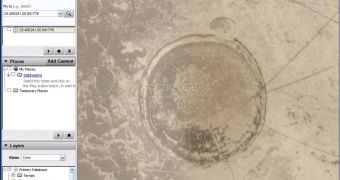Yesterday, Dr. Arthur Hickman, a government geologist, announced the discovery of a rare meteorite crater somewhere near Australia, in Pilbara. According to various sources, the scientist managed to discover the crater using Google Earth, the software application provided by Google that allows you to view satellite maps straight from your desktop. Although nobody knows for sure if it's a fake or not, a new report comes from Dakar where the Gulf Times, 'Qatar's top-selling English daily newspaper', informs that researchers have recently discovered another meteorite crater.
According to the publication, the crater was spotted in Dukhan and was apparently made by a meteorite that hit the ground in 1940.
"Sheikh Salman bin Jabor al-Thani, head of the astronomical department at Qatar Scientific Club, said yesterday the club believed that the meteor had hit Qatar in the 1940s. The club started a search for evidence three years ago because of stories of a "falling star" told by people of that era. The club took the help of Google Earth in the search. They succeeded in locating five craters, which were just visible on the surface," the Gulf Times editors wrote in the article.
Now, have a look at the adjacent picture. Do you really think that this crater could be made by a meteorite? Well, I really don't think so. And don't forget that the 'scientists' sustain it was made in 1940 but there's no evidence to support this statement.
Moreover, Ogle Earth found another proof that the crater may be a fake: "Googling "Sheikh Salman bin Jabor al-Thani" tells me he is in charge of determining when religious holidays start in Qatar and also executive manager of the Al Jabor Cement Company."
However, regardless if this is a true report or not, it's obvious enough that Google Earth is a real useful application that may help you discover amazing things.

 14 DAY TRIAL //
14 DAY TRIAL //